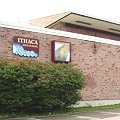- By Michelle Berry
- News
 Print
Print  While most residents of Tompkins County will see an increase in their school tax bills this year, Ithaca residents continue to enjoy the lowest tax rate in the county. As of October 1, City of Ithaca residents will see an increase in their school tax bills of 1.45% over last year, according to data released today by officials at the Ithaca City School District.
While most residents of Tompkins County will see an increase in their school tax bills this year, Ithaca residents continue to enjoy the lowest tax rate in the county. As of October 1, City of Ithaca residents will see an increase in their school tax bills of 1.45% over last year, according to data released today by officials at the Ithaca City School District.Although school districts pass budgets in May of each year, the overall county tax rates are not finalized until August. Final tax rates are calculated based on the amount revenues such as state and federal aid and financial reporting from Tompkins County’s Assessment Department on the overall value of taxable properties per school district.
“While the 2012-2013 budget is many months from a vote, the District will endeavor to stay within tax cap limits,” said Bradley (Brad) Grainger, Chair of the Finance & Legislative Committee of the Ithaca City School District’s Board of Education. Grainger, elected to the Board of Education since 2007, served previously as Chair of the Facilities Committee for four years, overseeing the District’s more than $98 million school renovation program.
Staying within the tax cap limits will require the district to continue to closely monitor all areas of the 2012-2013 budget, utilizing sound fiscal management and long range financial planning, according to school district officials.
The Tompkins County School Districts tax rates for the 2011-2012 school year are as follows:
1. Ithaca City School District $16.90
2. Newfield Central School District $18.05
3. Trumansburg Central School District $19.03
4. Lansing Central School District $19.09
5. Groton Central School District $20.56
6. Dryden Central School District $22.19
Determining a tax rate involves several variables including:
- The amount of state aid the District will receive – this varies year to year and is subject to the state political process.
- The amount of other revenues received such as interest on investments and a variety of miscellaneous revenues – this varies year to year and is subject to market conditions.
- The total assessed value of all property in the school district – this varies year to year and is determined by town or city assessors
- During the 1990’s, increasing economic expansion allowed most local governments to keep property values below the rate of inflation. However, the trend reversed, as economic slowdowns and other contractions to revenues remained constant. This put additional pressure on property tax revenue, which is often the fastest growing local revenue in New York State.
v7i38



